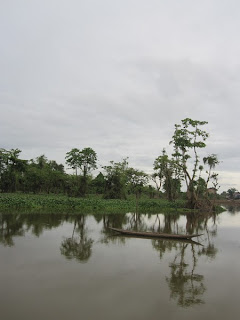One of the fun activities that we look forward every Christmas season is the chilly, casual walk on a windy night. The soothing effect of the cold northeastern
wind propagates good vibes and jolly mood.
But Amihan season can be more
exciting when you visit the coldest region in the country, the Cordillera. And
within this mountainous region, the best destination to be during the peak of Amihan
(December-February) is definitely Mt.
Pulag
Breath-taking sunrise. This split moment between darkness and light, when the sun slowly rises up in the sea of clouds and in glowing red-orange backdrop, is one of the most spectacular views that I've seen. No camera/video will be enough to
capture this awesome experience. Since less typhoons (I wish) and rains during
this period, higher chances of encountering this wonderful moment.
Sub-zero. Experience the butt-freezing below zero temperature in Mt. Pulag. Even the three degrees Celsius (and lower) in a high-altitude mountain is already a major pain in the ass, and an experience to die for. Those thick fleece and jackets gathering dusts in your closets will really be handy. The lowest record that I knew in Mt Pulag is -6 degrees Celsius, December 2010.
Walk above the Clouds. Experience a
beautiful trek above the clouds. The other major peaks of Cordillera such as
Mt. Tabeo , Mt Ugo and Mt. Napulauan
Amazing wildlife. Mt. Pulag National Park
Wonderful culture. Visit to Pulag can also means interaction with the indigenous Ibaloi. Interact with the rosy-cheeks children in their fleece school uniforms, or have quick chat with the women and men in their galvanized roofs walled houses. The freezing weather will encourage you to try the traditional delicacies such as hot-meal of pinikpikan, few shots of tasty tapuy (rice wine) or maybe try the nganga (mixture of beetle nut, lime and tobacco leaf) for dessert.
Mt Pulag is definitely the best
place to be this season... :)
.jpg)

.jpg)






















































